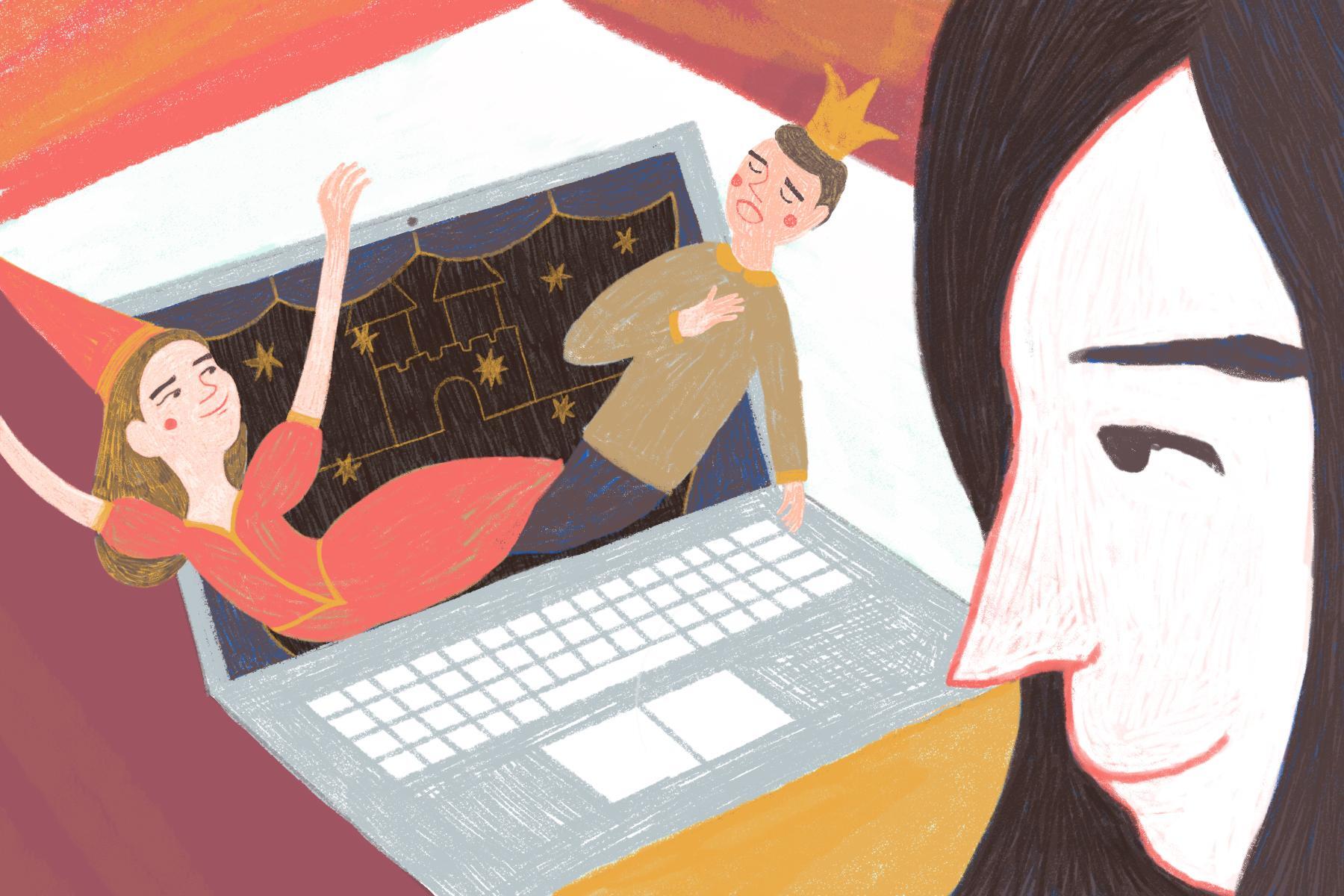Before COVID-19, easily accessible, professionally filmed recordings of theater productions were few and far between. Theater produced exclusively for a digital format was even more rare. The art form prides itself on its exclusive live and in-person viewings. Just a few months ago, many theater artists would have turned their noses up at the mere thought of creating a live play that was meant to be performed on a screen as opposed to a stage.
However, the pandemic has forced the theater industry to reckon with how to keep theater alive when sitting in a room with hundreds of other strangers is literally a life-threatening situation. The answer has been digital theater.
Just as practically every other aspect of life, theater had to put aside its pride and move online once the virus hit. While it is of course not the same experience to watch a play or musical on a screen, the theater industry has a lot to learn from its limited existence online over the past three months. Even when it is eventually safe for theaters to open their doors again, digital theater should not be forgotten, as it could be used as a powerful tool for alleviating some of theater’s longstanding access issues.
Theater is a historically inaccessible art form due to high ticket prices and the need to physically travel to a certain location. The economic barriers have made it so the typical demographic makeup of the audience of, say, a Broadway show in New York, consists mostly of old, white people. With the average Broadway ticket price resting at about $145, it is no wonder that the majority of people who can attend a Broadway show also happen to be old and white.
Additionally, having to travel to a theater to see a show means that people who do not live near a professional theater are much less likely to ever be exposed to the art form. They are even less likely to engage with it regularly, even if they would like to. Physically traveling and sitting for several hours to watch a show can be difficult and sometimes impossible for people with disabilities.
Thus, digitizing theater, as has been done in the face of the coronavirus, should continue to help overcome these access obstacles in the future, long after social distancing and face masks are phenomena of the past.
Digital theater has kept theater alive during COVID-19 through two main methods. The more popular method involves theaters releasing online recordings of productions that were filmed professionally while shows were running. For example, London’s National Theater has been releasing previously filmed productions on their YouTube channel weekly, and the recently created theater streaming service Broadway On Demand has released a few filmed productions and other theater-related content.
The second method has involved artists coming together to create theater specifically for a digital format. A great example of this kind of digital theater was when the cast of “Significant Other,” a Broadway play that closed three years ago, reworked the show for a digital format and performed it live online in May.
Recordings of theatrical productions had occasionally been released online before the pandemic. But with so many theater companies and artists newly engaging in these methods of online theater, the recent mass effort to digitize theater is one that has never been seen before. Putting theater online in these ways has proven both that it can be done and that doing so is a way of making theater more accessible to audiences from all walks of life, all over the world.
Theater that is released online, whether a previously filmed or live production, can be free or cost a fraction of what a ticket for a professional production would cost. The majority of the theater released online during the pandemic has been free or for a small price, often asked for as a donation to a charity. While it might not be reasonable for theaters to consistently release free, filmed versions of their productions, the cost of a “ticket” to an online professional show could certainly be much lower than the cost of a ticket to see a professional show in person.
More theaters and productions could also take advantage of the theater streaming services already in place. The industry could look to release content on services such as Broadway HD and Digital Theatre, which existed prior to the pandemic. These services are not free, but they are still much cheaper to use than buying a ticket to a live professional production. For example, it costs only about $10 to rent a show on the Digital Theatre platform.
While the enormous cost of attending professional theater is a whole separate issue, as ticket prices really should not be as high as they are in the first place, releasing more theatrical content online is a solution that could be implemented immediately to help bring theater to people who cannot afford to see it in person.
Digital theater also means that people who want to see theater would not be required to physically go to a theater, therefore removing the barrier of travel entirely. Getting rid of this obstacle means that living far from a professional theater or having any sort of ailment that makes it difficult to leave your home would not prevent you from seeing a show. So, for example, if Emily who lives in rural Wyoming wants to see “Wicked,” she can!
Professional theaters around the world should consider continuing to release digital content after the pandemic, but Broadway in particular should take the lead. As the most celebrated and widely known theater in the world, Broadway is a billion dollar industry that has the money and resources to expand digital theater offerings. A few professionally filmed recordings of Broadway shows are currently available online, but from what has been proven to be possible in terms of releasing digital theater during the pandemic, it should not be the case that you can only see a Broadway show if you are in New York and have $145 to spend on a ticket.
Let’s go back to Emily in Wyoming to understand how “online Broadway” could work. Emily has been dying to see “Wicked” ever since her elementary school chorus sang “Defying Gravity” at the spring concert. Unfortunately, Emily not only lives far from New York, but also from any big city where a touring production of “Wicked” may visit. Additionally, even if she could find a way to travel to a far-away theater, her family cannot afford expensive tickets to see a musical.
With the way Broadway currently functions, Emily would be out of luck. However, if Broadway were to release recordings of productions online every so often, it would give people in Emily’s position the chance to see them too. Instead of having to settle for listening to the cast album on repeat, Emily could curl up on her couch in Wyoming and watch a high-quality recording of the show. She could satisfy her “Wicked” obsession and experience the thrill of seeing a Broadway show despite the economic and distance barriers that make going to see the show in person impossible.
Some might argue that Broadway would hesitate to put recordings online because it would discourage people who have the ability to see shows in person from buying tickets, as watching the show online would be cheaper and easier. However, the majority of regular theatergoers will not stop seeing live theater, even if there are shows available to watch online. Although digital theater has been a great solution during the pandemic, there is no way to replicate the experience of seeing a live show online.
Broadway is a historic hallmark of New York culture and a tourist magnet that will not be harmed if long-running shows like “Wicked,” which has been making over a million dollars a week for years, were to release filmed versions online. Additionally, the Broadway industry could work together to find creative ways to ensure that shows, performers and creators were not being financially harmed or cheated by releasing content online.
For example, they could release a filmed version of a different production once a month that was available to rent for a limited time or agree to release a filmed version of a production with a short run after the show has finished its live run. Performers and creators could ensure these protections by working these types of agreements into contracts.
“Hamilton” is one example of a successful show that is learning to make itself available to wider audiences online. The production is releasing a recording of the original Broadway cast performing the show on Disney+ in July. (The recording was originally going to be released in theaters in October 2021, but the show decided to release it earlier on a streaming service because of the pandemic.)
While “Hamilton” uniquely benefits from the added success of its popularity in recent years (especially considering that people will pay thousands of dollars to see it), other shows can still learn from their experience.
It is hard to imagine now, but people will eventually be able to sit in a room among strangers and watch live theater again. When that time comes, the industry should not forget the ways that digital theater allowed anyone with internet access to experience the art form during the pandemic. Money and travel obstacles should not prevent people who want to watch professional theater from doing so, and digital theater is a great way to make these barriers a little more surmountable.

















